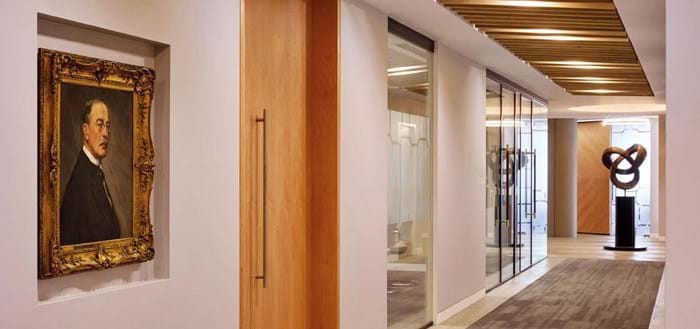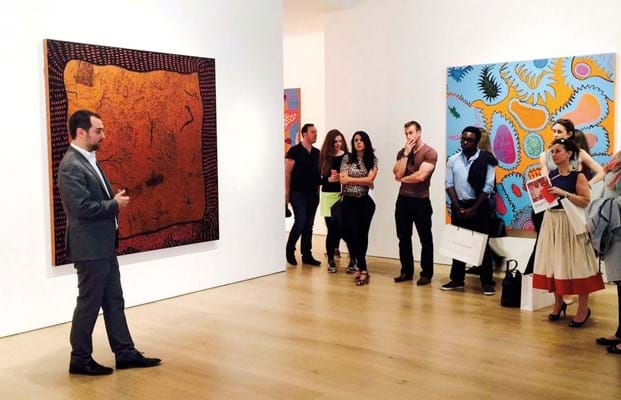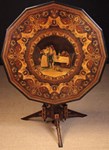In the old days, a dealer or collector with his or her eye on an interesting work at auction could secure the funds for a bid with just a quick call to his banker at Hill Samuel or Adam & Co. Providing overdrafts to help make that winning bid was all part of the service offered by these merchant banks.
Since the 1980s, however, smaller UK banks have been gobbled up by large banking corporations and the appetite to lend to the art world – a sector that some have described as ‘investments of passion’ – contracted as a result.
Today, lending to the risky world of art and antiques remains a shrivelled market in the UK. A handful of finance firms focus on asset-based lending to the wealthy owners of fine art, though new options are coming on stream.
Just this month art finance platform Maecenas announced plans to raise £400,000 to launch, which will allow investors to buy and sell shares in artworks.
Despite this, the UK market is a minnow compared with that in the US. This is partly thanks to a US law, the Uniform Commercial Code, which has helped the art-lending market in all its forms expand to around £6bn a year.
The UK’s current lending laws for art and luxury assets are more unwieldy, in several ways. It is friendlier to the lender rather than the borrower in allowing lenders to take possession of the artwork if the borrower defaults.
A lack of competition means interest rates are prohibitive, averaging more than 10% in many cases.
Victorian law
Underpinning asset-based lending in the UK is an antiquated law dating back to Victorian times.
While company law allows art-owning firms to borrow against such assets (as the lender registers a security over these goods at Companies House), individuals and trusts who want to do the same are currently governed under the 1878 Bills of Sale Act. It is a rule described by law commissioner Stephen Lewis as “archaic, inflexible, costly and unduly complex”.
Now, changes to this arcane law could be the fillip the market needs. The Law Commission, the government’s legal review body, plans to introduce the Goods Mortgages Act in 2019, which should simplify the lending process.
Also key to helping the art-lending market is the Law Commission recommendation of a searchable, electronic art register of assets that have been borrowed against, to inject much-needed transparency.
“The advantage of a new register would be to mimic what they already have in the US,” says Rudy Capildeo of law firm Boodle Hatfield.
“It would be the extra protection that lenders would want. There are some major banks that are excited about the proposed law changes. But they want a transparent market.”
If the big banks could be attracted to come into the sector, competition would increase and interest rates could come down. But it might not be so straightforward. “The problem is people don’t like others to know that they have borrowed against art,” says Luke Dugdale, founding partner and head of wealth management at art advisory firm Cadell+Co. “In other assets it doesn’t seem to matter but for art it is a no-no.”
But does this really mean it is impossible for the art market to become more transparent?
Harco Oever, at art finance broker Overstone, says: “Confidentiality is of course possible. Being transparent doesn’t mean we can’t have confidentiality.”
On the register
So are dealers prepared for the issues that come with databases, which involve putting more information in the public domain?
Some dealers are supportive in principle. Jonathan Green of Mayfair gallery Richard Green, says: “Regulation can of course be a pain but it is often necessary. A register has got to be a good thing in the end if banks will back the art world and believe in it.
“For the collector who has $20m of art in their home, the possibility to borrow against 50% of the value of this would be welcome and would boost the market.”
“A register has got to be a good thing in the end
Jonathan Green
Steven Beale, director of Trinity House Paintings, concurs: “To gain more transparency a register is inevitable.”
There are signs the art world is already coming around to the idea. The Art Loss Register, the world’s largest database of stolen art, has begun to build a database to allow lenders to check whether a potential borrower has good title on an artwork.
The firm is in active discussions with the art market to gain support. Crucially, the database is not open access, which ensures a degree of confidentiality for the borrower.
The new law could help art collectors and trust-owning wealthy people. But again, what do dealers think?
Dugdale says that it is currently “very difficult for a dealer to borrow against their stock. If a bank is willing to lend they want the dealer’s house as security, not his or her stock”.
One new entrant to the UK art market is Right Capital, which plans to lend to dealers.
Right Capital’s business development director Eleni Markopoulioti says: “Apart from some of the mega-dealers, other art and antique dealers are not of interest to the big banks as these businesses do not have consistent cash flow.
“The banks do not understand that they have millions of pounds of assets in their stock.”
The days of a cosy relationship with your local St James’s bank manager are gone, but for the art and antiques business the changes could in the end prove more transparent and professional, even for the most old-fashioned dealer.
Types of art financing
Pledge: the asset is given to the lender in order to borrow money against its value.
Auction advance: money lent on artwork before it goes to auction, and repaid when sold.
Art asset financing: art work owner borrows against its value while keeping the asset.
Art shares: the trade of shares in an art work.
In numbers
£6bn – size of US art lending market
1878 – date of current UK lending law
2019 – expected date of new UK lending law Goods Mortgages Act
10% – current average interest rates for art lending
50% – of value of art work can be borrowed against
Players in the art lending market
The high-value lenders include:
Falcon Fine Art, Athena Art Finance, Right Capital, the lending arm of Philip Hoffman’s Fine Art Fund Group, Citibank and subsidiaries of private banks including Emigrant Bank.
Luxury asset focused pawnbrokers include: Borro
Auction purchase funding firms include:
Unbolted, which has a tie-up with Stephan Ludwig’s Forum Auctions.
The auction advance market includes:
Sotheby’s Financial Services has a credit facility of $1bn with a banking syndicate led by Wells Fargo. Christie’s also discretely arranges financing for its top clients ahead of auctions.
Art shares market:
Maecenas hopes to launch a platform for investors to buy and sell shares in artworks.


























